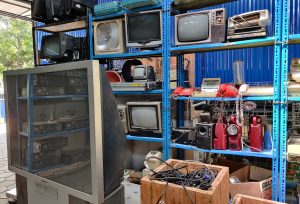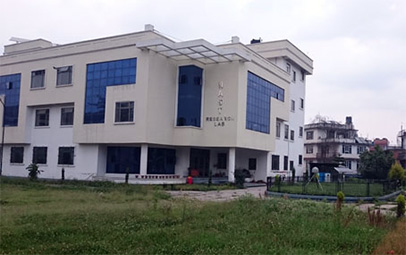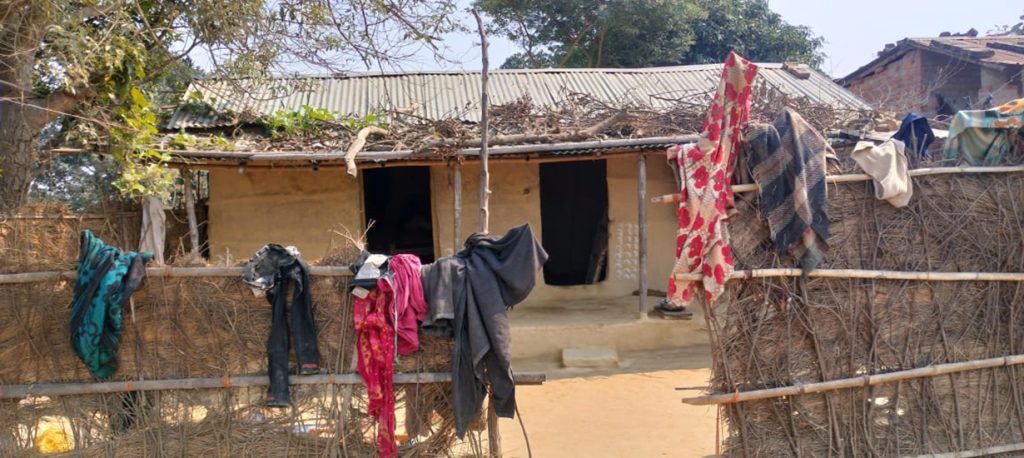
The 60th annual report by the Office of the Auditor General has highlighted that the Nepal Academy of Science and Technology (NAST) has failed to make the expected progress in the field of science and technology. It failed because it spent more budget on administrative work than on research.
In the fiscal year 2021/22, the academy spent only 51 per cent of the money from the total budget. Out of Rs 339.2 million, it spent Rs 200 million. The recurrent expenditure rate is 95 per cent and the capital expenditure rate is only 65 per cent.
However, NAST spokesperson Rabindra Prasad Dhakal disagrees with the report. “It is true that the administrative part consumes more budget but without regular expenditure, research cannot be conducted,” says Dhakal, “ But we cannot conduct research without completing the mandatory obligations such as pensions and salaries.”
Moreover, he disagrees that the expenditure incurred for the construction of the building is included in the administrative expenditure in the report. Dhakal says, “Since the government allocates insufficient budget, the academy is compelled to spend the majority of the amount on mandatory obligations.”
Regardless of the defences, NAST has been unable to put research, which was what the institution was meant for, its priority. Amid a lack of sufficient budget, the imbalance between regular and research expenses was not recorded for the first time last year.
Failure to spend money

According to the report of the Office of Auditor General, in the fiscal year 2019/20, out of the allocated Rs 431.8 million, the total expenditure at NAST was Rs 221.9 million. In the fiscal year 2020/21, out of the allocated Rs 390 million, the total amount of money spent on research was Rs 201 million.
This shows that the academy is not able to spend the given allocations every year.
On the one hand, the academy is complaining about the insufficient budget and on the other hand, it is unable to spend the allocated budget. So what is going on there?
Dhakal says that the unspent money is returned not because NAST is unable to work on research. He says, “There are certain rules that those frozen funds cannot be spent on research as they are allocated for different purposes.”
In the fiscal year 2019/20, the returned money was allocated back for building construction. Then, in 2020/21, the amount allocated as salary for vacant positions remained unspent. In 2021/22, the amount allocated for machinery was returned.
Passing the buck

The National Science, Technology and Innovation Policy, 2019, prepared by the government think tank, Policy Research Institute, presents a blueprint for creating a National Research Fund which will be more than one per cent of the country’s gross domestic product (GDP).
“But the policy is only about increasing the budget by removing the ‘number’,” says Dinesh Bhuju, a NAST professor.
To implement the policy, scientist Mahabir Pun recently staged a protest. On the fourth day of the protest, a four-point agreement was made between the government and Pun.
Yet, Professor Bhuju says that the Nepal government has given less priority to scientific research, technological development and innovation.
“The priority given to science and technology is exceptionally low as the current budget allocated for this field amounts to a mere 0.39 per cent of the total GDP whereas the average percentage of the world is 1.2,” says Bhuju.
He urges the government to increase the budget for science and technology.
Isn’t it time for a consistent commitment?

Japan has consistently demonstrated a commitment to the advancement of science and technology by allocating over 3 per cent of its GDP to this sector. Similarly, countries like Israel and South Korea have surpassed even higher benchmarks, investing more than 4 per cent of their GDP in these areas, he says.
“Additionally, such substantial investment has contributed to their current impressive standing in terms of scientific and technological advancements,” he adds.
However, Bhuju also says that NAST is failing to mobilise the existing resources by considering the allocated budget seed money.
“NAST has failed to mobilise even 10 per cent of its total budget from outside, which is extremely low,” says Bhuju.
To this, Dhakal argues that due to the lack of human resources, there is a decrease in external resources. “The opinion and track record of our scientists should be published. We can enrol external resources only if we have a high-level lab,” he says.
The current budget is adequate to only fulfil mandatory obligations. Now the additional budget will directly go to research, he claims. Dhakal further says that along with the government, other industries also need to invest in research and development.
Leadership failure
However, a young scientist says that although NAST can do more research with the current resources, it has failed to do so.
“The current leadership does not have knowledge about research. The academy cannot function effectively unless it gets a leadership who is well literate about scientific research,” says the scientist anonymously.
NAST is the biggest research centre in Nepal. It is supposed to do significant research and investigation, but it has been unable to do the expected work.
It has been 40 years since the establishment of the academy, but the budget allocation has consistently remained insufficient, Bhuju says. “Despite the retirement of scientists, there has not been a call for applications on their posts, which has also affected the research,” says Bhuju.
According to Dhakal, in these 40 years, the academy has received a budget of Rs 3.97 billion, or less than Rs 100 million every year on average. He says that the academy, which was established with 231 staff members 40 years back, now, has only 67 permanent employees.
“The number of employees should have been over 2,000. Neither internal promotion takes place nor the new placement After 14 years, some of our friends were promoted,” he adds.
Although the institution is an autonomous organisation, its service commission cannot recruit employees for the vacant posts, says Bhuju. He further adds, “Now the legal hassle should be solved. It has been difficult to recruit new ones.”
In a country like Nepal, where a minimal budget is allocated by the government, some scientists believe that research should be conducted by considering the allocated budget as seed money.
A former NAST fellow Basanta Giri says that along with human resources, budget and infrastructure, job security is also needed for research.
“Due to a lack of these things, the academy has failed to do expected work,” he says.
This story was translated from the original Nepali version and edited for clarity and length.
























